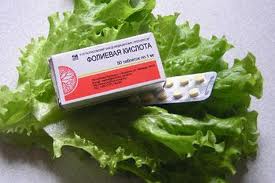Passion for sauna visits in the first weeks of pregnancy, when a woman still does not suspect her “interesting situation”, », excessive consumption of products containing carotenoids - carrots, tangerines, oranges, juice from them, plus a number of teratogens can cause neural tube malformations.
The overwhelming majority of spinal cord defects arise as a result of impaired fusion of nerve folds during the third and fourth week of development. These anomalies are called neural tube defects. . They often combine with defects in other tissues - meninges, vertebrae, muscles, skin.
Spinal fissure
Caused by violations of the formation of vertebral arches. This defect can only be a defect in bone tissue or it can be combined with damage to nerve tissue. Spinal fissures with significant damage to the neural tube are found in approximately 1 case per 1000 newborns,but this indicator varies among different population groups.
The closed gap of the spine
It is limited only by the defect of the vertebral arches. The area of the defect in this case is covered with skin, and the nerve tissue is not damaged. Deficiency most often occurs in the transverse sacral region. And, as a rule, it is characterized by a more intense hair covering over the damaged area. An abnormality is caused by a violation of the process of formation of vertebral arches and it occurs with a frequency of approximately 10% in practically healthy people.
Cystic fissure of the spine
A severe pathology of the neural tube, in which nerve tissues or meninges protrude through the defect in the arches of the vertebrae and skin with the formation of a bubble-like formation. Most often, a defect occurs in the transverse sacral region and is accompanied by symptoms of neurological disorders. Sometimes only the meninges meninges filled with fluid are protruded (a crevice of the spine with a hernia of the meninges, meningocele). In other cases, the hernial sac also contains nerve tissue (a crevice of the spine с a hernia of the brain and meninges, , meningomyelocele). Sometimes, due to a violation of the processes of formation and fusion of nerve folds, the spinal cord in this area remains in the form of a neural plate (a fissure of the spine with a fissure of the spinal cord, myeloschisis, or rachis).
In almost every case of the cystic fissure of the spine, hydrocephalus develops, since the spinal cord has grown to the spine. With lengthening of the spine, the spinal cord attached to it is drawn into the large opening of the base of the skull, blocking the outflow of cerebrospinal fluid.
Cystic gap of the spine can be diagnosed prenatally by ultrasound and determination of the level of alpha-fetoprotein in the serum of the mother or in the amniotic fluid. The vertebrae in the ultrasonogram are visually traced from the 12th week of pregnancy, therefore, already at this stage of embryogenesis, a defect in the closure of the vertebral arches can be determined. The newest way to eliminate the defect is to conduct surgical intervention in the fetus at approximately 28 weeks of gestation. After a cesarean section, the fetus is removed, the defect is removed from it and again placed in the uterus. This approach reduces the number of cases of hydrocephalus, improves the activity of the bladder and intestines, as well as motor development of the lower extremities.
The use of folic acid in a dose of 400 mg daily, two months before conception and throughout pregnancy, can reduce the incidence of malformations of an uneven tube by 70%.
















